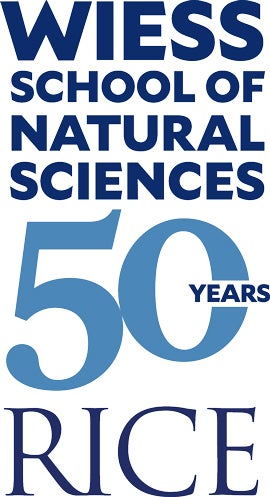
Charlotte Raymond spends her days with living rocks — and her nights fronting a rock band. But it’s her work in the lab that has her thinking about the future of the planet. A junior majoring in Earth, Environmental and Planetary Sciences (EEPS) at Rice, Charlotte is using Antarctic algae to explore how tiny organisms influence the global carbon cycle and what that can tell us about climate change.
“I connected with Dr. [Mark] Torres’ research lab my freshman year,” she said. “His group studies the global cycling of water and carbon, and he introduced the idea of working with algae on Antarctic ice sheets.” Over time, Charlotte’s research grew to span two labs: Torres’ geochemistry-focused group and Sven Kranz’s biosciences lab, which specializes in Antarctic algae physiology. “It’s been the best of both worlds,” she said. “I get really good mentorship, both on the biological side of the experiment and the geological side.”
Charlotte is tackling a major global challenge: How do changes in ocean nutrients affect the long-term sequestration of carbon? To do this, she studies a species of Antarctic diatom, a type of algae that builds a protective silica shell. “They’re like little living rocks,” she said.
This past summer, Charlotte conducted a detailed, multi-generational experiment on the effects of phosphorus limitation on the algae. She cultivated the diatoms for 11 generations in a four-degree-Celsius cold room under continuous light, mimicking the conditions of water directly under the ice during the Antarctic summer.

The results quickly showed the strain: The algae were under extreme duress. “Normally, algae grow exponentially, but when I limited phosphorus, they went in a really stepwise way, suddenly jumping up,” she said. Physiologically, they were "not photosynthesizing well, absolutely not efficient at all with energy usage reflecting back more light than they were taking in."
These physiological changes translate into shifts in the algae’s carbon-to-silica ratios, a key factor in how much carbon sinks to the seafloor. Charlotte’s data show that under phosphorus stress, diatoms tend to form thinner silica shells — reducing their ability to lock carbon away, with ripple effects for the global climate.

“When this happens, they’re more likely to be eaten by other critters in the environment rather than sinking to the seafloor,” she says. “And it’s the sinking to the floor that actually takes carbon out of the atmosphere over long time scales.” Her findings are critical for evaluating geoengineering strategies, suggesting that approaches like iron-seeding the ocean could inadvertently trigger phosphorus limitation, undermining the intended carbon sequestration.
The same blend of biology and geochemistry that shapes her research has guided Charlotte’s path at Rice. She initially applied as a biosciences student, intrigued by planetary systems and global processes, but she quickly found EEPS through conversations with graduate students during orientation. She credits both faculty and peers with helping her find her research footing. “The grad students in the EEPS department are so helpful, very willing to interact with the undergrads,” she said. “Everyone is genuinely interested in what everyone else is doing.”
Outside the lab, Charlotte channels her energy into music. She’s a vocalist in Igneous is Bliss, a rock band she co-founded through the Rice Undergraduate Geoscience Society. “It actually started at an outside porch social,” she said. “We were just randomly chatting, like, wouldn’t it be funny? And then we made it happen.”
Whether analyzing microscopic algae or performing on stage, Charlotte thrives on curiosity and connection. Her work shows how blending disciplines can illuminate complex climate processes, and how tiny living rocks may hold big lessons for the planet.

